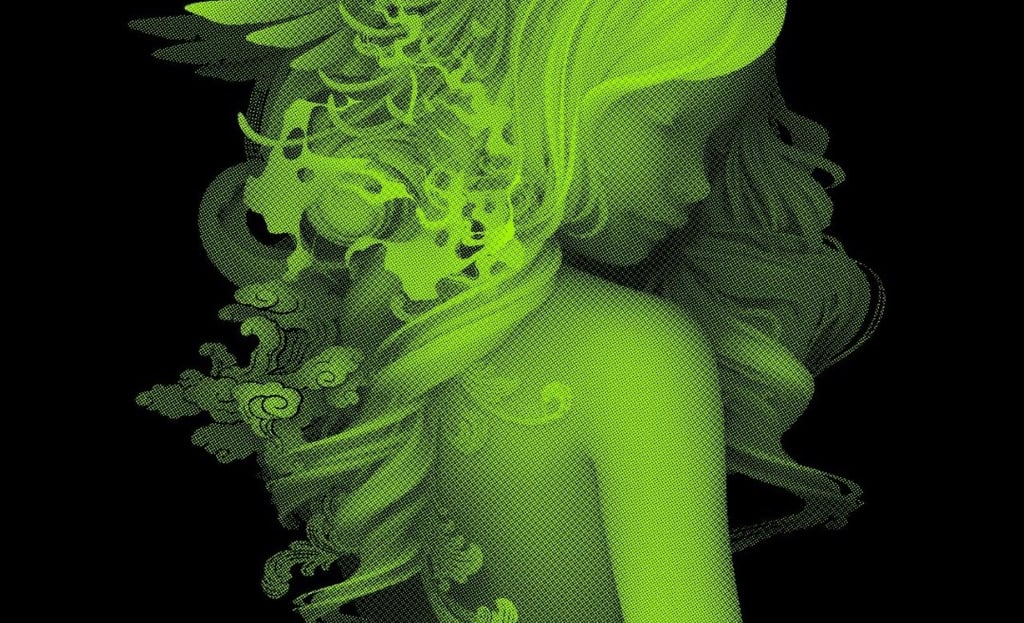Matter of Silence Kazuki Takamatsu and the Art of Measuring Invisible Distance
A meditation on the delicate thresholds between visibility and absence, memory and emotion, analog and digital. This curatorial text explores Kazuki Takamatsu’s haunting visual language—where ghostly figures emerge from gradients of gray, inviting us to see with slowness and feel the silence between images. A poetic and philosophical lens on an artist who paints the invisible.
FEATURED ARTIST OF THE WEEK
Charlotte Madeleine CASTELLI
6/11/20253 min read


There exists a threshold—intangible yet radical—that divides appearance from its shadow, the image from its simulacrum, presence from memorial echo. Along this fracture line—between vision and disappearance—Kazuki Takamatsu’s work emerges, a discreet yet inescapable emanation.
Born in Sendai, a Japanese city etched by trauma and reconstruction, Takamatsu forges a visual poetics that might be defined as post-sublime—suspended between the inner radiance of the invisible and a melancholic awareness of its dissolution. His compositions, often inhabited by adolescent female figures—diaphanous, silent, immobile in their hieratic stillness—do not narrate; they emanate.
They do not communicate through narrative grammar, but operate within the electromagnetic field of visual intuition, where sweetness, grief, and suspension coexist in the same formal vibration.
In these images, the artist does not merely represent—he distills.
What he distills is not so much a face or a pose, but a perceptual climate: a temporally rarefied zone, a distance that does not divide but amplifies. A distance that resonates—like the empty ideograms of Zen calligraphy or the pauses in nō theater, where absence becomes presence.
At first glance, his works may appear to be digital sculptures, computer-generated renderings of some dreamlike algorithm. But a closer look reveals each image is painstakingly painted by hand, with monastic precision, using meticulously calculated gradients of grey. Takamatsu employs the principle of depth mapping—a technique borrowed from augmented reality software—to simulate spatial distance through chiaroscuro alone.
The result is a sense of the uncanny: angelic figures, somewhere between shōjo and specters, seem to emerge from an algorithmic mist, yet are born from obsessive study of the painted gesture. Here lies the true impact of his art: in the short-circuit between analog and digital, between Japanese spirituality and pop culture, between personal trauma and universal archetype.
Takamatsu does not expose pain. He suspends it.
As Susan Sontag wrote in Regarding the Pain of Others (2003), “The aestheticized image of trauma always risks anesthetizing the viewer.” Takamatsu seems to answer this critique with a sidestep: he subtracts pain, veils it, disperses it in the details—thereby forcing us to feel it more deeply.
His works speak the language of ghosts. Not the ones that frighten, but the ones that remain. The ones that sit at the far end of the room, watching, without saying a word.
Philosopher Byung-Chul Han, in The Burnout Society (2010), writes that the contemporary world is saturated with positivity, exposure, and visibility—rendering symbolic mourning impossible. In this context, Takamatsu’s art becomes a necessary act: it does not denounce, it does not sensationalize, it does not simplify. It builds a quiet altar to lost time.
One of the most profound lenses through which to understand his work is the Japanese aesthetic concept of ma: the empty space, the pause, the interstitial moment. His canvases are never “full,” but structured like silences—suspended pauses in which what is missing holds more value than what is present. As in Yasunari Kawabata’s novels, everything is suggested, never declared.
The void is not an absence, but a state of resonance.
In an era where art is often swallowed by spectacle or algorithm, Takamatsu defends a slow, meditative vision—one that asks the viewer to stay. To dwell.
His work is an invitation to look slowly, echoing the principles of “slow looking,” a movement now being reembraced by museums like the Smithsonian as an antidote to digital overstimulation. But in Takamatsu’s case, it’s more than a slow aesthetic—it is an ethics of seeing.
A visual listening exercise for the invisible.
"I chose Kazuki Takamatsu this week because his practice acts as a threshold—between past and future, between the human and the digital, between painting and perception. At a time when Future is exploring the intersections between memory, technology, and emotional engagement, his work offers a perfect lens—not necessarily to understand, but to feel. Takamatsu reminds us that the future is not only a place of innovation, but also a space where we must listen to the silent ruins we carry within us. His figures seem sculpted from the dust of our emotional algorithms. For this reason, his work aligns seamlessly with our most experimental exhibition paths, where art does not need to ‘shout’ in order to be powerful. Future is committed to highlighting artistic voices that build new visions through ancient codes. Takamatsu is one of these rare authors—those who work on the margins and force us to rethink the center.”
Curatorial Statement
Charlotte Madeleine Castelli for Future
© 2025 Charlotte Madeleine Castelli. All rights reserved.
